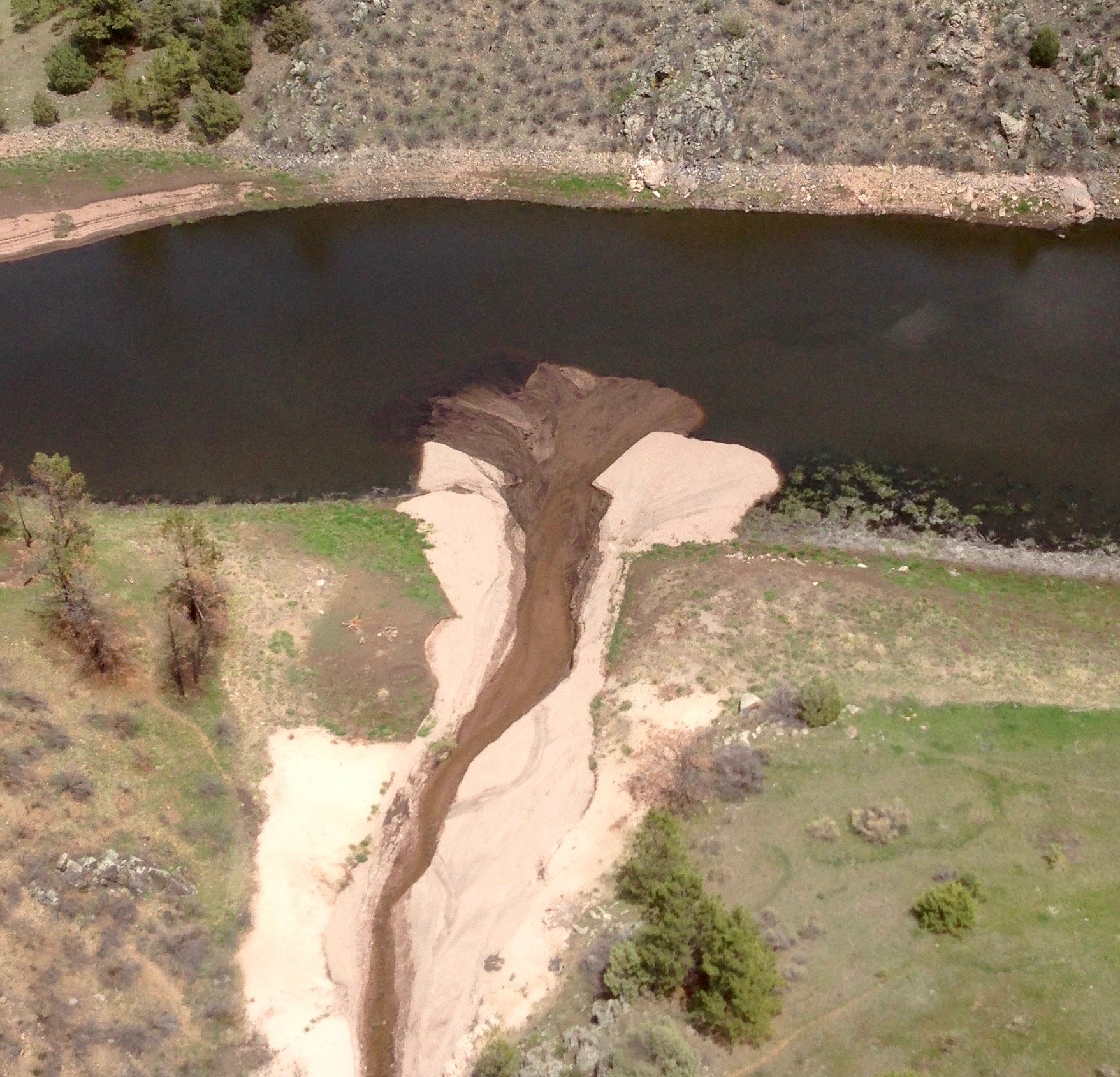
Hewlett Gulch Fire Watershed & Seaman Reservoir Protection
Project Summary
Completion Date: 2012
Partners
City of Greeley
The Hewlett Gulch Fire burned just west of Fort Collins, Colorado in the spring of 2012. It burned 7,685 acres, mostly in ponderosa pine on north-facing slopes, but also in some shrub communities and grasslands. Most of area of high burn severity was within the immediate drainage area of Milton Seaman Reservoir, which is owned and operated by the City of Greeley. The City of Greeley hired JW Associates to review the BAER, complete an analysis of the situation, and provide recommendations on protection measures that would protect water supplies.
JW Associates completed a small watershed hazard analysis and developed targeted recommendations.
One of the watersheds that drains directly into Seaman Reservoir experienced high burn severity on steep slopes just above the stream. That stream filled with sediment above Milton Seaman Reservoir and created an unstable sediment fan that extended into the reservoir. The next phase of this project was to stabilize the sediment fan.
Project Actions
Complete a small watershed hazard analysis
Develop targeted recommendations for post-fire mitigation
Stabilize sediment fan created from extreme burn above Seaman Reservoir
Benefits
Protect important water supplies for the City of Greeley
Plan for future wildfire hazards
Reduce soil erosion in post-wildfire landscapes
Protect and restore the Upper Poudre River Watershed
Targeted Mitigation Actions
Individual Watershed Post-fire Mitigation
Applying aerial wood mulch
Seeding of native plants
Directional felling of burned trees into targeted gullies to reduce erosion
Milton Seaman Reservoir Sediment Fan Stabilization
Create an armored channel through the sediment fan to minimize erosion from runoff events
Plant native plants, willows, and seed to protect the flatter portions of the fan from erosion
Application of geotextiles and willows to stabilize the face of the sediment fan
Milton Seaman Reservoir Sediment Fan, Hewlett Gulch Fire, 2012
Sediment build up, High Park Fire, 2012
Directional tree felling, 2012
Aerial mulch application, Hewlett Gulch Fire, 2011




